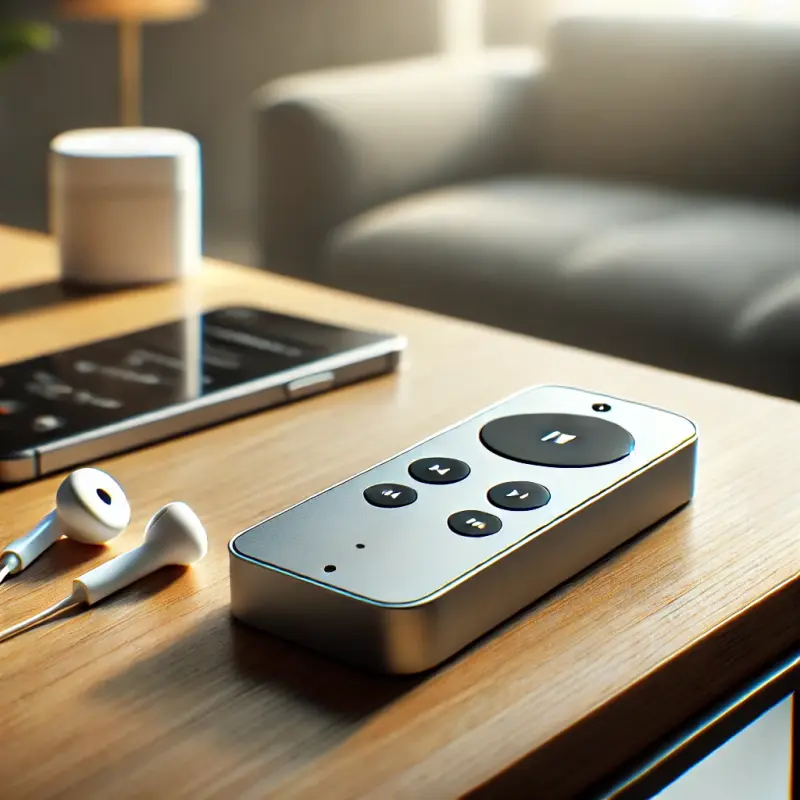Personalized Devices for Controlling Music Systems: How Gadgets Adapt to User Preferences

In a world that values personalization, music devices are evolving to meet individual user tastes, leveraging adaptive technologies, AI-driven algorithms, and smart interfaces. These advancements in music gadgets are more than convenience—they transform how we engage with music, adapting to unique preferences in real time. From AI-enabled smart speakers to wearable controls, let’s explore how these gadgets evolve to match your music style and listening habits.
The Shift Toward Personalized Music Experience
The trend toward personalized user experiences has grown rapidly in recent years. Music control gadgets are now designed to understand individual tastes and respond to real-time commands, all while “learning” from repeated interactions. This shift highlights a crucial change from generic, one-size-fits-all devices to systems that cater to specific preferences. The process incorporates machine learning, artificial intelligence, and IoT (Internet of Things) technologies, which enable seamless integration between devices and deliver a more immersive, user-centered music experience.
Smart Speakers and AI-Driven Music Curation
Smart speakers such as Amazon Echo, Google Home, and others are the frontrunners of personalized music systems. Equipped with advanced AI algorithms, these devices can suggest songs, playlists, or even genres based on listening history and user interactions. They adapt by:
- Analyzing Listening Patterns: These devices keep track of song selections, volume preferences, and frequency of usage to curate playlists that align closely with individual preferences.
- Voice Command Recognition: The AI in smart speakers recognizes specific voices, so each user in a household can have a customized experience, even on shared devices.
- Mood-Based Playlists and Recommendations: Some smart systems can suggest music based on time of day, activity, or even mood, offering a deeply tailored listening experience.
Wearable Music Controls for Enhanced Personalization
Wearable devices have introduced another layer of convenience in managing music systems. Earbuds, smartwatches, and fitness bands now come equipped with music control features that allow users to skip tracks, adjust volume, or select playlists with simple gestures or voice commands. The real innovation lies in how these wearables adapt to user preferences over time, learning when users typically listen to music and which genres they favor.
Wearables like smart earbuds often include sensors that detect biometric data, such as heart rate, to curate playlists that match the user’s current energy level. For example, during a workout, the wearable might automatically switch to high-energy music, while during relaxation, it could select softer, calming tracks.
Personalized Playlists through AI and Machine Learning
Music streaming services such as Spotify and Apple Music have set the standard for personalized playlists. By analyzing user behavior, they can predict and recommend music suited to specific tastes. Music devices integrate with these streaming services, allowing them to:
- Create Dynamic Playlists: Using complex algorithms, streaming services can create playlists that adjust in real time, adding new songs that align with a user’s current mood or activity.
- Learning-Based Suggestions: The longer a user interacts with a device, the better it becomes at predicting what they may want to hear, continuously refining suggestions and playlists.
Multi-Room Music Systems: Tailoring Sound for Every Room
Personalization isn’t limited to individual devices—it extends to the entire home. Multi-room audio systems, like Sonos, allow users to control music in various rooms through a central hub or an app on a mobile device. Each room can have its own customized settings based on who’s using it, the time of day, or specific moods.
For example, while relaxing in the living room, a user might want ambient music, while in the kitchen, they might prefer a more upbeat playlist. The ability to control each room’s music independently from a single device enhances the personal experience within the household.
User Interfaces and Accessibility
The advancements in user interfaces have also greatly improved accessibility in music systems. Adaptive technology is not only about creating a personalized playlist but also ensuring the interface is intuitive and easy to navigate for diverse users. Features such as voice controls, gesture-based commands, and touchscreen interfaces contribute to a streamlined experience.
Many modern music control devices have customizable screens that can be organized to prioritize frequently used features. For instance, users who often listen to specific playlists can set shortcuts to access them instantly, without navigating through various menus.
Privacy Considerations in Personalized Devices
While personalization offers numerous benefits, it also raises privacy concerns, particularly regarding data collection. Smart devices gather data on user habits to deliver personalized recommendations, which means they collect information on listening habits, location, and sometimes even voice recordings. Many manufacturers now provide privacy controls that let users manage how much data they share, helping them enjoy a customized experience while keeping control over their personal information.
The Future of Personalized Music Systems
The future of music control devices lies in even deeper integration of AI and user interaction data. As these technologies evolve, the level of personalization is likely to reach new heights, potentially enabling predictive suggestions based on contextual data such as time of day, physical location, and user mood. For example, a device might suggest different music depending on whether the user is at home, commuting, or working.
With the growth of wearable technology, gesture control, and voice recognition, personalized music systems are set to become even more intuitive. Upcoming technologies might incorporate real-time feedback from users, enabling an even closer alignment with personal tastes and listening habits.
This move toward personalization in music control devices reflects the broader trend of adaptive, user-centered technology. By embracing AI and machine learning, these devices not only make it easier to access and control music but also offer a listening experience that feels uniquely crafted for each user.
Articles
Inscrivez-vous à nos alertes pour recevoir nos dernières publications directement dans votre e-mail.